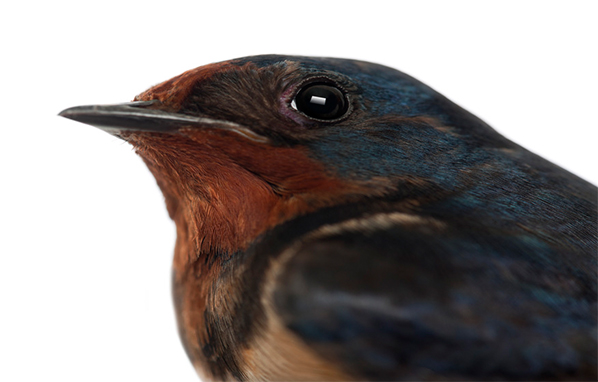 You don’t have to be human to enjoy the inviting warmth of a fireplace. In the cold of winter, the heat coming from your chimney may entice birds to gather around the top to stay warm; once in a while, one may venture in when the flames die down. Not only that, your chimney is prime real estate for swallows or aptly-named chimney swifts who are looking for just the right place to raise their young. But how do you keep birds from getting in your chimney - or if they're already in there, how do you get them out?
You don’t have to be human to enjoy the inviting warmth of a fireplace. In the cold of winter, the heat coming from your chimney may entice birds to gather around the top to stay warm; once in a while, one may venture in when the flames die down. Not only that, your chimney is prime real estate for swallows or aptly-named chimney swifts who are looking for just the right place to raise their young. But how do you keep birds from getting in your chimney - or if they're already in there, how do you get them out?
You may need to help or at least encourage them to relocate, but you’ll also need to do it safely. Swallows, swifts, and other songbirds are protected by the Migratory Bird Treaty Act; anyone who knowingly destroys birds or nests that might contain eggs or young can be fined or penalized. If you find birds in your chimney, here are some tips to help you humanely send them on their way.
Tip #1: Identify - Is It a Bird?
Unless you’re sure it’s a bird (listen for flapping, scratching, and/or chirping) call a wildlife removal expert. A panicked raccoon, opossum, or similar critter with teeth and claws is not something you want to deal with.
Tip #2: Determine If the Bird Is Just Visiting
Sometimes birds just get a little too curious and they decide chimneys are worth exploring. Unfortunately, their journey often ends up in panic when they realize getting out isn’t going to be as easy as getting in.
If the bird is in the chimney rather than the fireplace, open the damper. Place a large box, open side up, inside the fireplace opening and prop it up so there isn’t enough room for the bird to escape into the room. Turn down the lights and wait quietly until the bird enters the box. When it does, slide the cardboard sheet gently over the box opening, take it outside, and let it fly free.
If the bird is in the fireplace itself, close all doors leading to the room. (Hang sheets over any room entrances without doors). Open a window or an exterior door in case the bird gets loose in the room – in which case you can gently guide it outside with a broom. Open the fireplace screen or door slightly and toss a towel over the bird to trap it, then carry it outside for its release.
If you’re uncomfortable with handling this on your own, or if the invader has fur instead of feathers, call your local animal control who can put you in touch with a wildlife removal expert.
Tip #3: Relocate the Bird or Animal
To a barn swallow or a chimney swift, your chimney may look like the perfect place to raise a family. If you hear multiple chirps emanating from your chimney, you’ll just have to wait it out. Most baby birds leave the nest approximately two weeks after they’ve hatched, so keep monitoring the sound levels. A week or so after you’ve heard the last peep, you can take action. In fact, you should make it a priority because swallows and swifts sometimes have multiple clutches a year.
Contact an experienced, professional chimney cleaning service to remove the nest ASAP. (They can inspect and have your chimney ready for next season, too.)
Tip#4: Take Preventative Action!
But don’t stop there. Get a chimney cap installed to prevent any future visits from furry or feathered friends. Contact the experts at Doctor Flue, who put a cap on your chimney or complete a chimney inspection now, and you could avoid a future wildlife rescue in your fireplace.
Connect with Doctor Flue on Social Media
Facebook | Twitter | Google + | YouTube | Pinterest | Houzz
